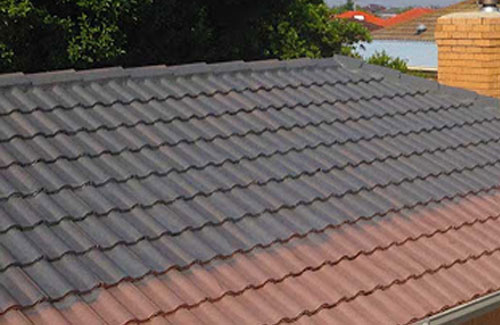
Salt Safe and Frost Resistant Terracotta Roof Tiles by Monier
07 November 2022When faced with various environmental circumstances depending on where you choose to reside, your roofing materials are quite important. Severe problems might arise whether you live near the coast or in a temperate area with freezing weather conditions.
Living in coastal settings and seaside houses may be enjoyable, but it can also be difficult. Being so near to the ocean and breaking waves also means that you’ll have to deal with some harsh, soft elements, and your home should be able to resist these circumstances. Apart from tolerating and accepting that your property will never be sand-free, it would be best if you also accepted that the salty sea air could cause rust and corrosion to metal. Similarly, living in colder places exposes you to chilly and damp weather conditions.
Environmental conditions greatly influence your roofing materials, which is why you must pick intelligently. It is critical to analyse the advantages and downsides carefully and never settle for inferior roofing materials.
High-Quality Monier Terracotta Roof Tiles
Monier terracotta roof tiles’ production involves using certain clays, which are then kiln-fired at temperatures of 1100 degrees Celsius. This process results in a roofing material that is robust yet lightweight, of great quality and has a long lifespan. The firing process, known as vitrification, allows for exceptional colour performance. Clay and glaze elements fired at high temperatures melt and fuse, producing a final tile resistant to the severe effects of ultraviolet radiation.
Because of the manufacturing technique used in Monier, the terracotta roof tiles produced there are robust and long-lasting under harsh situations; as a result, they are salt-safe and resistant to freezing temperatures.
Resistance To Extreme Environment and Harsh Elements
Roofing tiles that have been frozen and thawed might sustain damage from frost. When water penetrates the porous areas of your roof tiles, it can cause significant damage, such as spalling and delamination, due to the volumetric expansion of the water. On the other hand, exposure to the salty air of the sea can cause the structural integrity of roof tiles to deteriorate with time. It has the potential to puncture roof tiles, which can lead to leaks in the roof, particularly in tiles manufactured by Monier that are constructed of terracotta.
Terracotta roof tiles of poor quality are susceptible to damage, particularly when the kiln process has been rushed and the proper temperature and kilning have not been achieved, resulting in actual air holes between the tiles. This damage is more likely to occur when the rushed kiln process is. During the manufacturing process, quality control and taking the necessary precautions must be prioritized to guarantee that not a single terracotta roof tile will have any undetectable defects.
Other Features of Monier Terracotta Roof Tiles
When something is “fire resistant,” it indicates that it is constructed out of non-combustible materials and is suitable for use in regions prone to bushfires, particularly the most prone areas (BAL-FZ), provided that it is built following Australian standards.
The ability to keep the temperature inside consistently is what we mean when we talk about a product’s “thermal performance.” Additional contributors to this phenomenon include sarking, insulation, roof colour, and issues regarding the general architecture of the structure.
The ability to maintain its colour and look over a long period is referred to as “colour retention,” and it is one of the factors that adds to the overall appealing aspect of your house.
Recent Posts
-
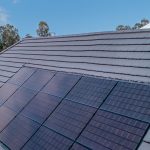 Monier SOLARtile vs Bolt-On Panels: Integrated Solar Roofing for Melbourne Homes
Monier SOLARtile vs Bolt-On Panels: Integrated Solar Roofing for Melbourne Homes -
 Monier C-LOC™ Concrete Roof Tiles: Superior Gloss Retention, Durability & Long-Lasting Performance
Monier C-LOC™ Concrete Roof Tiles: Superior Gloss Retention, Durability & Long-Lasting Performance -
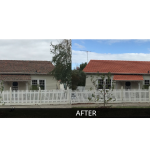 Terracotta Tile Roof Restoration: 7 Signs Your Roof Needs Urgent Attention
Terracotta Tile Roof Restoration: 7 Signs Your Roof Needs Urgent Attention -
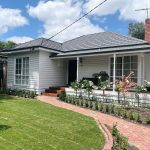 Residential Roof Tile Installation: Preparing Your Home & Site for Installation Day
Residential Roof Tile Installation: Preparing Your Home & Site for Installation Day -
 Roof Extensions in Heritage Overlays: Matching Monier Profiles Without Breaching Planning Rules
Roof Extensions in Heritage Overlays: Matching Monier Profiles Without Breaching Planning Rules -
 Are Monier Concrete Roof Tiles the Most Economical Roofing Option? Here Are the Key Reasons
Are Monier Concrete Roof Tiles the Most Economical Roofing Option? Here Are the Key Reasons -
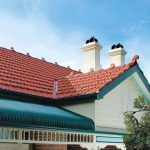 Roof Tiling Melbourne: Expert Climate-Driven Choices for Long-Lasting Roofs
Roof Tiling Melbourne: Expert Climate-Driven Choices for Long-Lasting Roofs -
 Terracotta Roof Tiles: Monier Classic Styles Backed by Modern Roofing Technology
Terracotta Roof Tiles: Monier Classic Styles Backed by Modern Roofing Technology -
 Roofing Services Melbourne: Don’t Risk DIY – Call the Professionals
Roofing Services Melbourne: Don’t Risk DIY – Call the Professionals -
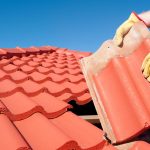 Need Melbourne Roof Replacement? Choose Monier Tiles for Long-Lasting Results
Need Melbourne Roof Replacement? Choose Monier Tiles for Long-Lasting Results

